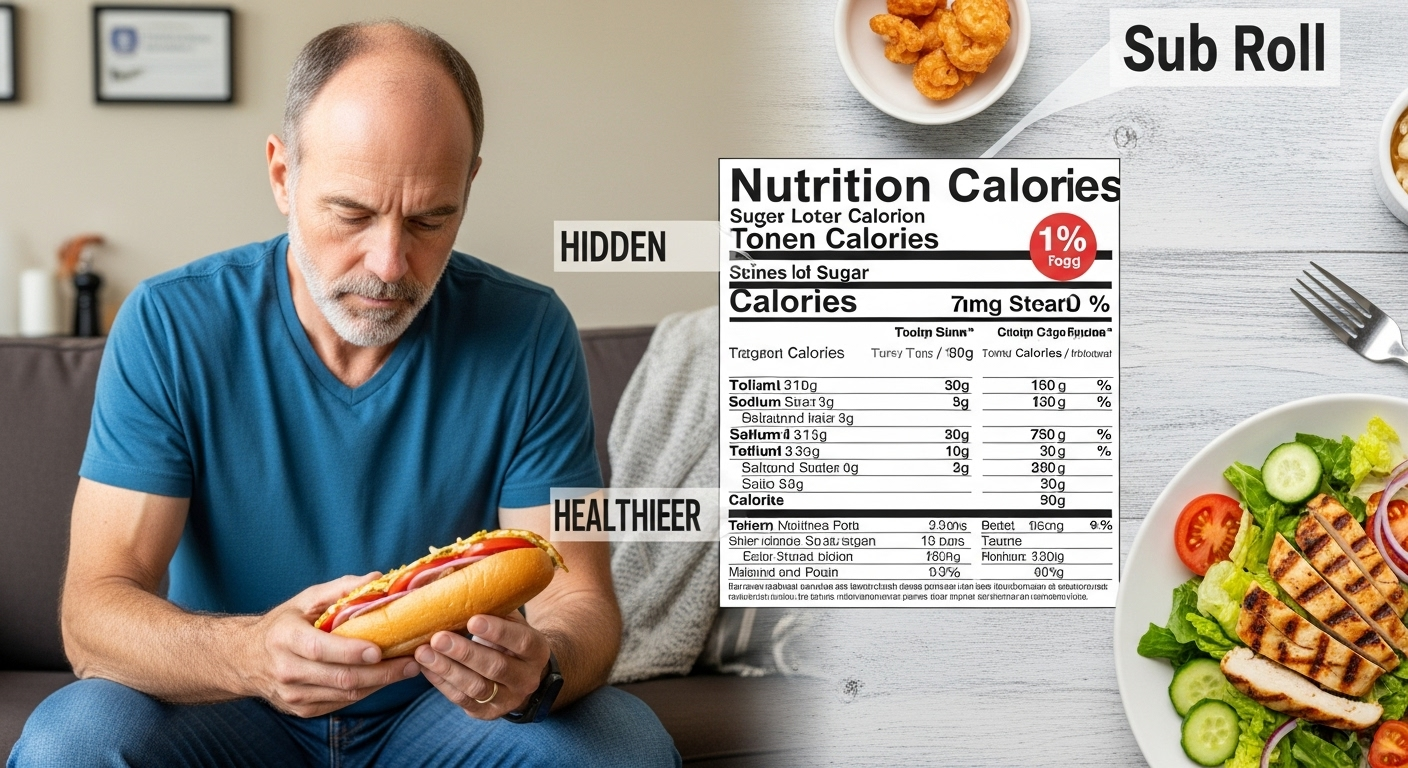Understanding the calorie impact of your sub roll
When you bite into a sub sandwich, the sub roll itself packs a surprising calorie punch—often overlooked when counting macros. A typical 6‑inch white sub roll contains around 180–260 calories, depending on thickness and bakery type . For instance:
- A 6-inch white hoagie-style sub roll is ~200 calories
- Some larger rolls (8‑ to 10‑inch) hit 430 calories
That’s nearly a quarter of a 2,000‑calorie diet—before adding fillings or sauces. These “hidden calories” can derail weight‑loss or health‑maintenance efforts without mindful planning.
Why sub roll calories matter for health‑conscious eaters
- Carb overload: Most sub rolls are ~70–80% carbs. That spike may affect blood sugar levels.
- Low fiber: White rolls offer little fiber, meaning less satiety and quicker hunger rebounds.
- Portion illusion: Rolls look light, but nutrition kits show otherwise (e.g. Kroger white roll – 260 cal)
How many calories in a sub roll are hidden in plain sight?
By focusing on calories in a sub roll, nutrition‑mindful readers can better control intake. Recognizing that many sub rolls alone contribute ~200 cal, you can adjust sides, beverages, or choose lighter alternatives.
What influences calorie count in sub rolls?
Types of flours and grains increase hidden energy
- Refined white flour is calorie‑dense but low in nutrients.
- Whole grain or seeded rolls may have more fiber—but often more calories too.
- Bakery-style “giant” rolls can reach 580 cal .
Size matters more than you think
- A 12‑inch roll can double the calories of a 6‑inch.
- Always check weight (g) and calories per serving.
Added fats or sugars in dough
- Some rolls include sugar, oil, or potato flour—boosting calories.
How to slash calories from your sub sandwich
#1 Choose thin or mini rolls
A mini or “kids” sub roll (e.g., 71 g soft roll) may only have 180 cal . Opting for smaller sizes reduces the base calorie load.
#2 Go for whole‑grain light variants
Brands like Canyon Bakehouse offer half‑roll (~53 g) with 140 cal, cutting ~60 cal vs. standard.
#3 Lighten your fillings and spreads
- Use lean proteins (turkey, grilled chicken).
- Load up veggies.
- Choose mustard instead of mayo.
#4 Consider open‑face style
Eat half a roll topped with fillings—cutting 50% of bread calories.
Monitoring portion sizes visually
- Use your palm to estimate carb portions: a roll the size of your palm ≈ 200–250 cal.
- If using Alexa Shorter or Elizabeth Shorter’s method of mindful serving, halve or quarter the bread portion.
For more blogs and insights on the digital world, visit Technologiia.com.
Smart swaps and healthy habits
Swap bread for lettuce wraps
Lettuce or collard wraps can cut 200+ calories.
Lean protein + salad = lower calories, higher nutrients
Replace half the roll with a spinach salad.
DIY adjust‑a‑roll for control
Bake mini rolls at home, controlling sugar and gluten.
Wrap-up: Making informed sub roll choices
By becoming aware of just how many calories in a sub roll lurk beneath the surface, you can make smarter swap decisions—mini rolls, whole‑grain light breads, or even lettuce wraps. These swaps don’t just lighten your meal—they increase nutrients and satiety.
Conclusion
Tracking the hidden calories in a sub roll empowers healthier choices. With simple swaps, portion control, and mindful selection—like visiting 5 Short Road Elizabeth’s local bakeries or following advice from Elizabeth Shorter—you can enjoy sandwiches without excess calories. Balance is key!
FAQs
Q: Can I just eat half a sub roll?
A: Yes! Enjoy half with fillings and save or repurpose the rest later. You’ll cut ~100–200 cal instantly.
Q: Are whole‑grain sub rolls better?
A: They offer more fiber and nutrients, but may still be calorie‑dense. Weigh their pros vs. size.
Q: How many calories in a sub roll from Subway?
A: A 6‑inch Deli‑style roll is around 170 cal. Adding fillings will increase it.
Q: What’s a low‑calorie sub alternative?
A: Try open‑face, mini‑rolls, lettuce wraps, or pita halves for fewer calories and more micronutrients.



